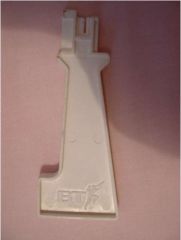Installing a telephone extension or several extensions around the house is relatively easy, there are now kits sold in DIY stores and electrical retailers which make it very easy. The kits often comprise of a length of wire with a socket attached and a extension socket which can be placed almost anywhere, the problem with these kits is that the connector which plugs into the master socket is rather bulky and protrudes and has a tendency to receive the occasional knock, like the one below.
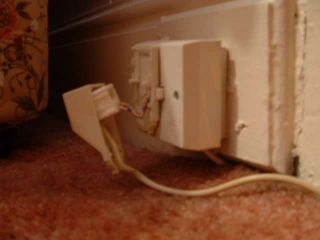
Although this extension still works, every time it is moved slightly it cuts you off, the only option is to hard wire the wire directly to the socket which it is fed from. This is very easy to do and will only take a couple of minutes.
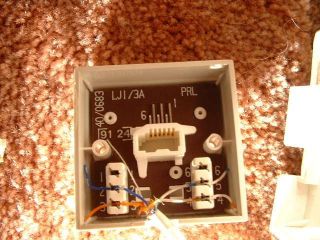
Firstly unplug the damaged connector from the socket and unscrew the two retaining screws holding the front onto the pattress, you will see that there are only four wires.
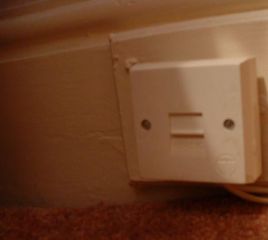
Now simply cut the damaged end off the cable and strip the outer sheath of the cable then insert the wires in the correct terminals by copying the wires which are already there, use an insertion tool to insert the wires or alternatively a small flat screwdriver. Now fasten the socket back to the back box and test the phone, if it is not working check the connections.
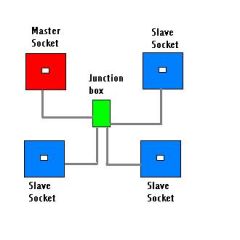
All sockets from different telephone companies differ slightly, in this instance we will be looking at the most popular BT. The law states that the Master socket must be fitted by the service provider, once this is fitted you can add extensions as long as the furthest extension is not more than 50 metres away from the Master socket. Extensions should never be fitted in a bathroom or similar damp room such as a swimming room. Telephone cable must not run alongside domestic wiring cable- it must be at least 2 inches away from it! Domestic wiring normally only uses 4 wires for telephones, 6 core wire is used in offices and complicated exchanges.
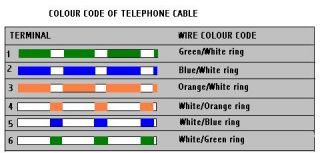
You have two choices before you install a new telephone extension, you can either purchase a kit which will look like the picture above which simply plugs into an existing socket or you can purchase some telephone wire and a socket and wire in to either another existing socket or a special junction box! Personally I'd go for the wire and socket as the end result is far neater.
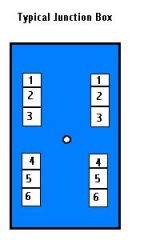
Fitting additional extensions is very easy, you simply locate the socket then run the wire back to the nearest telephone extension and either use the plug in adaptor or wire it in following the colour code above. When routing the cable it can fasten to the skirting board using cleats or can run under floors or above ceilings. Telephone junction boxes are also available, these are very handy as you can connect 4 extensions into one of these boxes.



